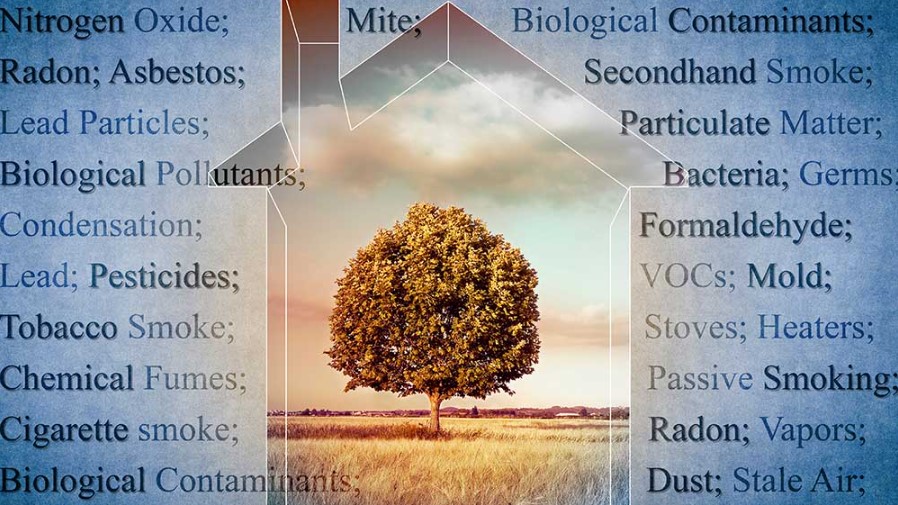Many people are not aware of the importance of indoor air quality testing. Indoor air quality testing is important because it can help to improve the air quality in your home. Indoor air quality testing can also help to identify problems with your home’s ventilation system.
What is indoor air quality testing?
Indoor air quality testing is the process of testing the air inside a home or office to see if it meets certain standards. The test usually measures the levels of various pollutants, such as carbon dioxide, dust, and mold, in the air. Indoor air quality testing can be performed by a professional company or by the homeowner themselves.
Testing for Air Quality
Indoor air quality testing is important for ensuring the safety of your home or office. Poor air quality can lead to a variety of health problems, including respiratory infections, headaches, and fatigue. Testing can help you identify the source of the problem and take steps to improve the air quality in your space.
The Different Types of Air Quality Tests
When it comes to air quality testing, there are a few different types of tests that can be performed. Here is a brief overview of some of the most common types of air quality tests:
1. Air Quality Sampling: This type of test involves taking a sample of the air in your home and sending it to a lab for analysis. This is typically done if there are specific concerns about the air quality in your home, such as if someone in your family has asthma or allergies.
2. Air Quality Monitoring: This type of test involves setting up an air quality monitor in your home and letting it run for a period of time. This is a good option if you want to get continuous monitoring of the air quality in your home.
3. Combustion Safety Testing: This type of test is important if you have any combustion appliances in your home, such as a gas fireplace or stove. The test will measure the levels of carbon monoxide and other combustion products in the air to make sure they are safe.
4. Lead Testing: If you have concerns about lead exposure, this type of test can be done to measure the levels of lead in the air. This is especially important if you live
How to Interpret Air Quality Test Results
When it comes to air quality testing, it’s important to know how to interpret the results in order to make the necessary changes to improve the air quality in your home. Here are a few tips on how to do just that:
-Look for any areas where the air quality is significantly lower than the rest of the house. These areas could be indicative of poor ventilation or another issue that needs to be addressed.
-Pay attention to the levels of specific pollutants in the air. If you’re concerned about a particular pollutant, look for tests that measure that specific contaminant.
-Be sure to ask about what kind of air quality standards were used for the test. This will help you understand what the results mean in relation to other homes.
With these tips in mind, you’ll be able to better understand your air quality test results and take action to improve the air quality in your home.
Improving Indoor Air Quality
When it comes to air quality, we often think about the outdoors. But the air inside our homes and businesses can be just as important – especially since we spend most of our time indoors. Indoor air quality testing can help us identify and eliminate sources of pollution in our indoor spaces.
There are a number of different factors that can affect indoor air quality, including ventilation, humidity, temperature, and the presence of pollutants like dust, mold, smoke, and chemicals. Some of these factors are easy to control, while others may require more effort.
Ventilation is one of the most important factors in controlling indoor air quality. Good ventilation can help to remove contaminants from the air and improve airflow. There are a number of ways to improve ventilation in your home or business, including opening windows and doors, using fans, and installing mechanical ventilation systems.
Humidity levels can also impact indoor air quality. Too much humidity can lead to the growth of mold and mildew, while too little humidity can cause static electricity and respiratory problems. Maintaining a comfortable humidity level is important for both your health and the durability of your belongings.
Temperature also plays a role in indoor air quality. Extreme temperatures can make it
Conclusion
Indoor air quality testing is a process of measuring the levels of contaminants in the air inside a building. The results of these tests can be used to identify sources of pollution and to improve ventilation systems. Indoor air quality testing is important for ensuring the health and comfort of occupants in a building, and it can also help to save energy by reducing the need for heating and cooling.






